
Blog: Left Behind In Pain: WHO Report, June 2023
![]() Hannah Ikong
Hannah Ikong
![]() 10th July 2023
10th July 2023
Imagine trying to live with severe unrelieved pain caused by an illness such as cancer. The pain is overwhelming…. affecting your mood, your sleep, your ability to do the simplest task, and your relationships. The only painkiller you can find or afford is paracetamol which can’t relieve the severe pain. You feel an increasing sense of despair…how can you live with this suffering?
This is the reality for many millions of people across the world and an issue that Cairdeas and our partners see and seeks to address daily.
In the middle of June, the World Health Organization (WHO) issued a new report that speaks to this reality. “Left behind in pain: extent and causes of global variations in access to morphine for medical use and actions to improve safe access.”
Dr Yukiko Nakatani, the Assistant Director-General of Medicine and Health Products in WHO introduces the growing crisis as “the persistent lack of access to morphine for medical use, particularly in low- and middle-income countries.” Nakatani continues, “This report underscores the fact that morphine is an essential medicine and a gold standard for pain relief that has been included in the WHO Model List of Essential Medicines since 1977” (p. 7).
The barriers of accessible and safe morphine use are many. “Despite its importance, consistent and safe access to morphine is hampered by a range of factors, including a lack of coordination along the supply chain, inadequate physical, financial and skilled human resources, weak governance, and misconceptions about pain and opioids” (p. 7).
The report shows continued unequal and inadequate access to morphine: “more than 95% of all the opioids (in morphine equivalent doses) were distributed to high-income countries, with only 0.03% being distributed to low-income countries” (p. 14).
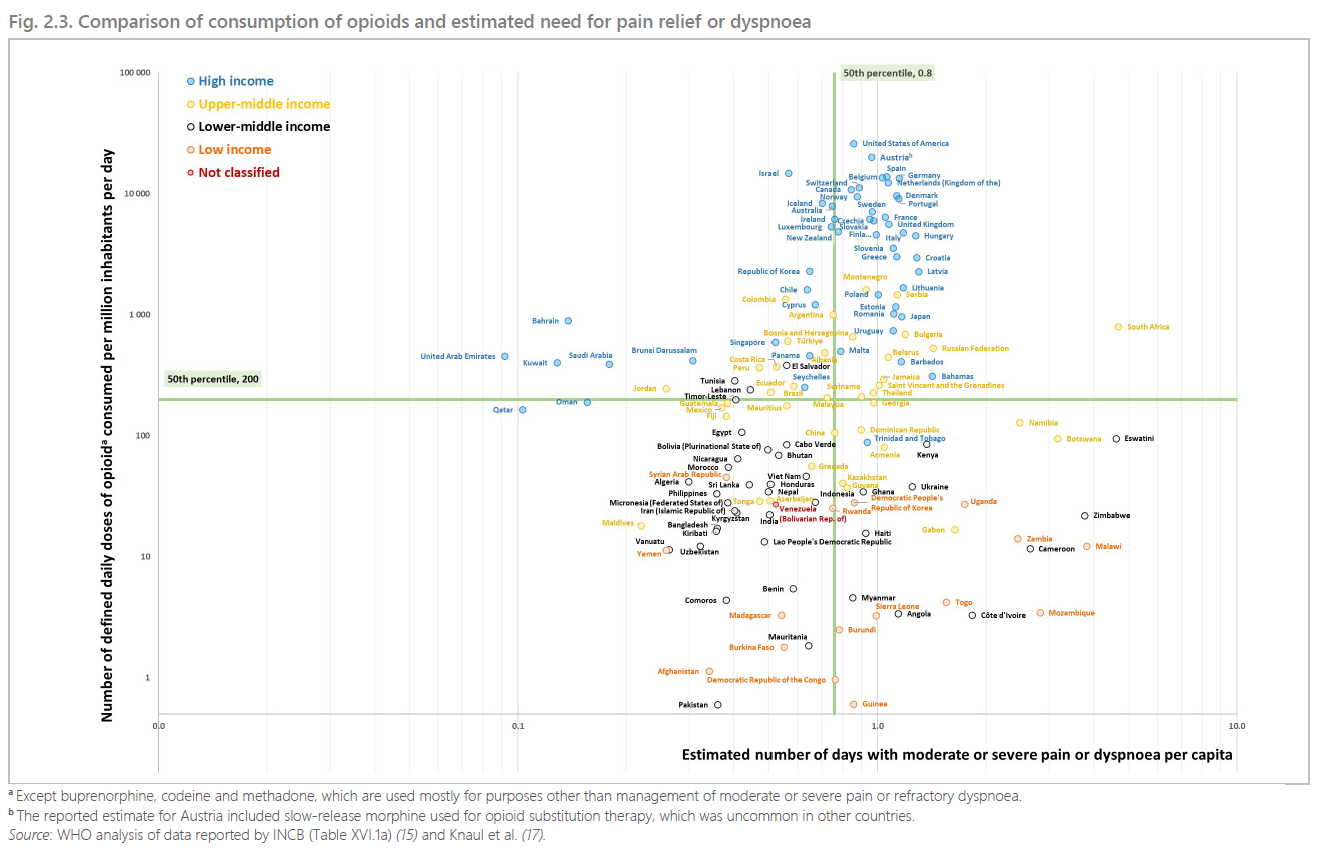
Due to inconsistency in the availability of morphine, half of surveyed lower-income countries reported that at least 80% of their patients could not receive morphine when needed (p. 22). These disparities play a toll, with estimates that half of the deaths worldwide include serious health-related suffering (p. 14).
We encourage you to download and read the WHO report here for the full details. Meanwhile we will highlight three areas of action recommended to improve morphine access below in light of our international work and partnerships in palliative care.
Recommendation #1: Policy work and government structures.
Advocacy work such as raising awareness about unmanaged pain and suffering as well as demystifying morphine and addressing fears among governmental leaders and health care leaders is foundational to morphine access. Such policy work can begin in regional areas, especially after a country has agreed to include palliative care but may not be able to implement it.
We have seen this before in different regions of Uganda, where we have been privileged to meet and share our needs assessment observations with the District Health Official (DHO) of Obongi district. Our reports to him regarding palliative care needs of refugees and hosts in their areas has gained the district’s attention and prompted their support of the work of our partners.
Or, in the hospital setting, advocacy involves the outlining the need for trained professionals and allocation of staff to either create or partner with a palliative care unit. Staffing support and training opportunities have come through two of the national hospitals in Kampala, Uganda.
Recommendation #2: Training of healthcare workers in morphine use.
Hand-in-hand with advocacy is the building of capacity for healthcare workers to safely prescribe, administer, and store morphine. This second recommendation may capture our most active part the Cairdeas IPCT international partnerships.
From the recent two-week training in Mauritania through colleagues in Sudan, to our professional diploma programme in the Gaza Strip in palliative care and pain management, to the revolving cadres of medical students and healthcare trainings in Uganda, palliative care education is foundational in all of our international work. Knowledge is key whether is transferred through training postgraduate doctors, providing clinical observation to palliative care nurses, or simply coming alongside the patient and caregivers in understanding pain management.
The WHO report agrees: “It is important to note that any efforts to improve the availability of morphine products must be accompanied by a health workforce that is well-trained in the use of opioids for medical purposes through professional education. Without it, increased product availability cannot translate into safe and effective pain relief for patients, and can cause wastage.” (p. 7)
Recommendation #3: Establishing systems and local production for morphine.
We are highlighting a third, from the many, recommendations of establishing reliable systems for morphine access and to include local production of morphine. Establishing hub-and-spoke distribution networks was prioritised for the WHO region in Africa through their recent survey, with other regions such as in the Western Pacific, adding affordable pricing and expanding access to different facilities.

While Cairdeas IPCT and our partners are not directly establishing systems or areas for morphine manufacture and distribution, it is through our collaborative advocacy, research, and education and training that will build systems. And these systems through palliative care can be transformational.
As Dr Mhoira Leng has shared in the recent conference for ICMDA in Arusha, Tanzania, palliative care is values-based care: “promoting dignity, relieving suffering, demonstrating compassion, fighting for justice.” From transforming the individual lives, to the medical practise, to the institutional systems and society as a whole, with the knowledge and application of palliative care comes transformative power.
See below for a list of recommended actions from the surveys collected by WHO for their June 2023 report.
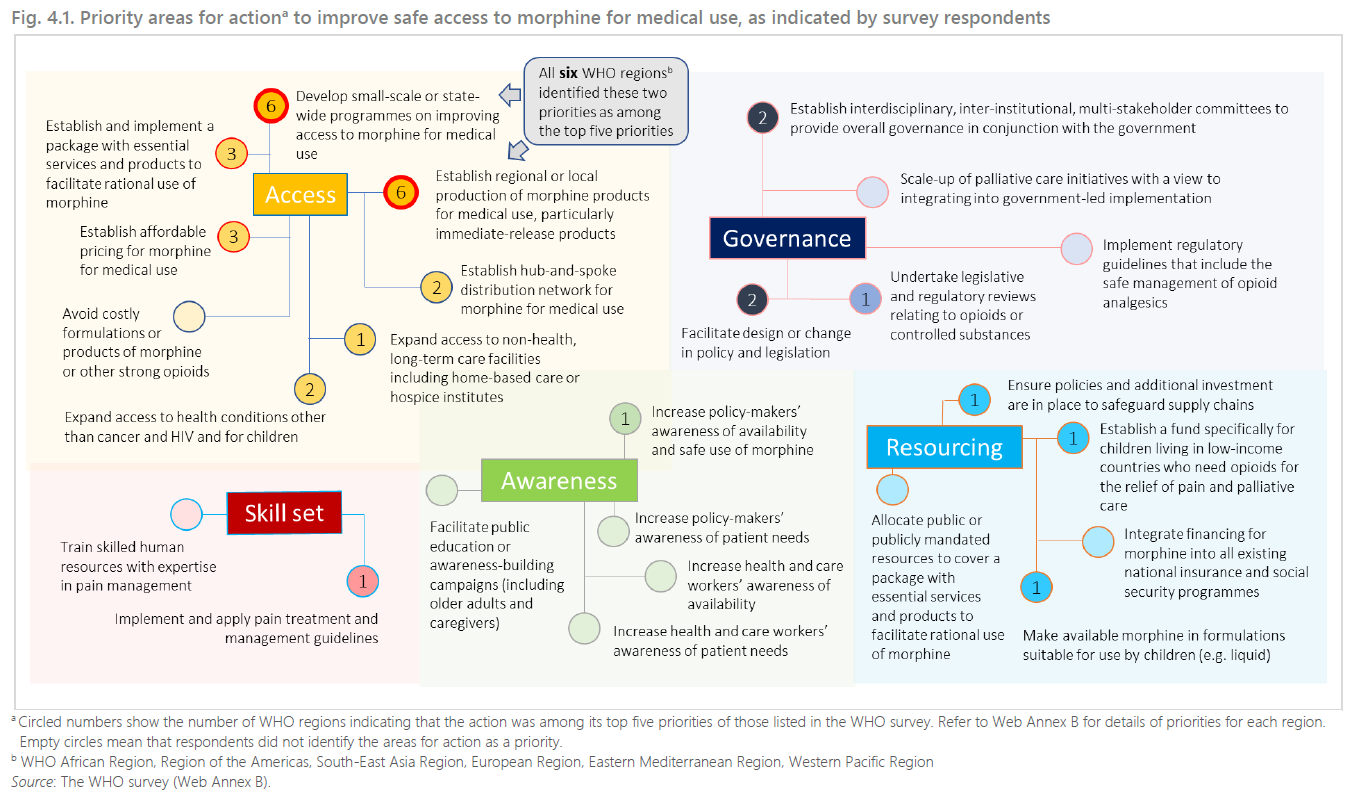
Cite:
Left behind in pain: extent and causes of global variations in access to morphine for medical use and actions to improve safe access. Geneva: World Health Organization; 2023. Licence: CC BY-NC-SA 3.0 IGO.

World Health Organization Report sharing the on the current accessibility of morphine around the world.

Dr Yukiko Nakatani, the Assistant Director-General of Medicine and Health Products in WHO.
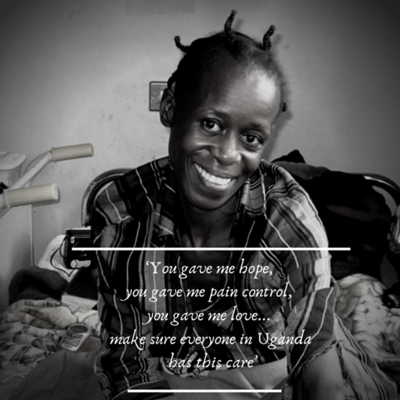
A quote from a patient who benefited from pain management and other holistic care. "You gave me hope, you gave me pain control, you gave me love ... make sure everyone in Uganda has this care."

Highlighting fellow colleagues in advocacy: senior nurse Florence Nalutaaya from PcERC (left) stands alongside PcERC Board Member Prof Julia Downing (right).

The group leader (left) during a Nurses training giving account for the team’s list of fears and side effects of morphine to PcERC Clinical Leader Liz Nabirye (right).
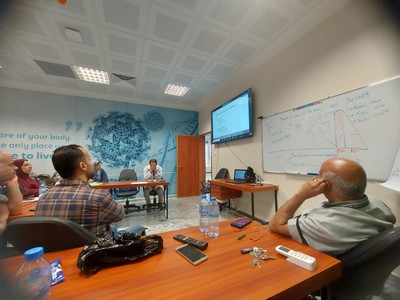
A snapshot from a virtual teaching session in Gaza, led by Drs Khamis Elessi and Mhoira Leng.
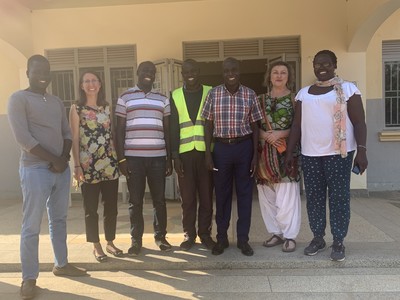
The Needs Assessment team of researchers from Cairdeas IPCT, PcERC and Peace Hospice visit the District Health Official of Obongi District.

An illustration of the transformative power of palliative care: metamorphosis.
